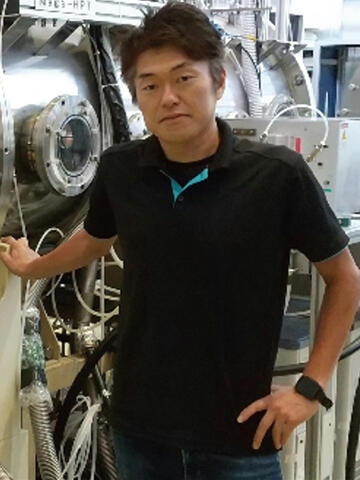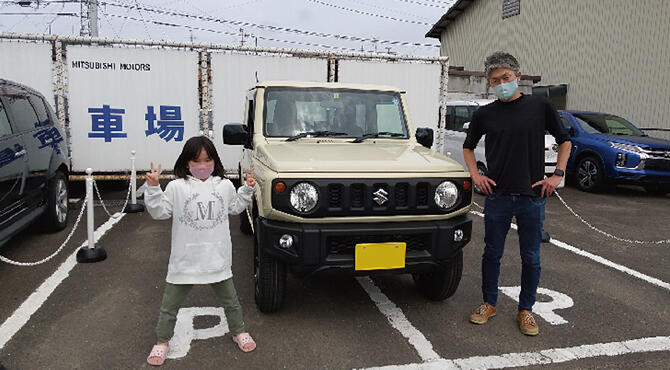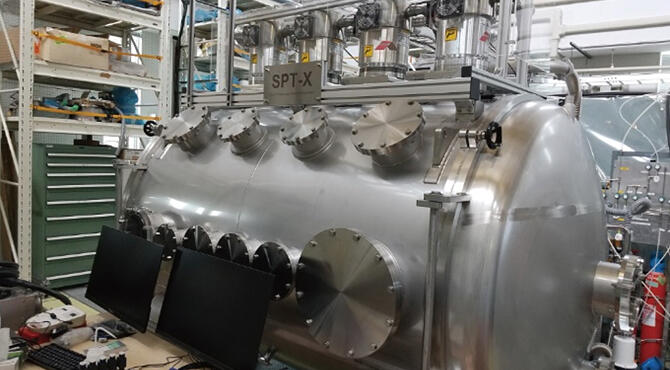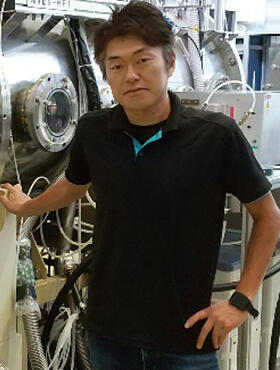
Q1. What led you to pursue a career in plasma physics and engineering?
A1. I was fascinated by the physical phenomena that I could see through experiments, and through international research, I became aware of space transportation.
At university, by some fateful chance, I ended up in the plasma physics and engineering laboratory, which was conducting research on plasma related to nuclear fusion. I gradually became absorbed in research to unravel physical phenomena by collecting data from my own creations and conducting a series of experiments with large equipment.
My current goal is to use plasma propulsion engines for the transportation of construction materials and other materials in space needed for space stations and planetary bases. The idea of using the phenomenon of particles in plasma accelerating on their own as an engine was born during discussions with professors while I was a researcher in Australia. Later, I participated in an international project to measure the thrust of plasma and began to think that space transportation could be realized by improving the performance of plasma propulsion engines.

Q2. What is your specific research topic?
A2. To clarify the complex characteristics of plasma and improve the performance of plasma propulsion engines by looking from different perspectives.
Plasma is called the 'fourth state' of matter after solids, liquids and gases. While the theoretical analysis of plasma is progressing based on electromagnetism and fluid dynamics, our understanding and application of plasma are still in the developmental stage because it produces different physical phenomena depending on various conditions and operations. In particular, I focus on the instability of the plasma itself and its interaction with the magnetic field. I am working on improving the propulsion efficiency of a high‐power, electrodeless 'magnetic nozzle plasma propulsion engine' and clarifying the physical issues.
In this propulsion engine, fuel (gas) ionized by the plasma source is accelerated in a magnetic nozzle and ejected into space to generate thrust. Although it has the advantage of allowing long distances to be traversed using electricity generated by solar power and other means, the challenge is that the propulsion efficiency of a plasma propulsion engine is very low (approximately 1%), while that of the ion engines currently in use is approximately 50%. In the FOREST research program, we were able to increase the propulsion efficiency to 30% by identifying the energy and particle loss factors and installing a magnetic field structure on the wall of the plasma generation source.
Another experiment showed that plasma instability, which is one of the causes of energy loss in other experiments, also contributes to the actuation and acceleration of the propulsion system. Thus, in addition to improving the performance of the propulsion system, another major achievement is the discovery that this instability is a strength, which had previously been regarded as a negative factor among engineers. We are engaged in daily research, envisioning that one day a transport vehicle equipped with the plasma propulsion system we develop will travel through space to Mars or even further to distant galaxies.

Q3. What advice do you have for aspiring researchers?
A3. Actively find your strengths so you can be involved in various fields.
When you hear the word 'space transportation,' you may have a magnificent mental image, but in reality, research is a repetition of trial and error through steady manufacturing and experimentation. Because we could not achieve the results we expected, there were many times when we spent long hours on our research, struggling to maintain our motivation. We were very happy when we were able to increase the propulsion power as much as we struggled, and the feedback from inside and outside of Japan gave us momentum for the next phase of our research.
I believe that a student's school days are a period for them to find their own strengths that will enable them to be involved in various fields in the future. It doesn't have to only be study; it could also be from recreation. I want students to actively look for their own strengths.
(TEXT: Manami Yokoi)

Profile
Kazunori Takahashi
Born in Miyagi Prefecture, Japan. In 2006, completed a doctoral course at the Graduate School of Engineering, Tohoku University. Holds a Ph.D. (Engineering). After working as a visiting researcher at the Plasma Research Laboratory of the Australian National University (ANU) and as an assistant professor at the Faculty of Engineering, Iwate University, assumed his current position in 2013. After working as an A‐STEP researcher in 2012‐2013, 2017 and 2020‐2021, become a FOREST (Fusion Oriented REsearch for disruptive Science and Technology) researcher in 2022.




